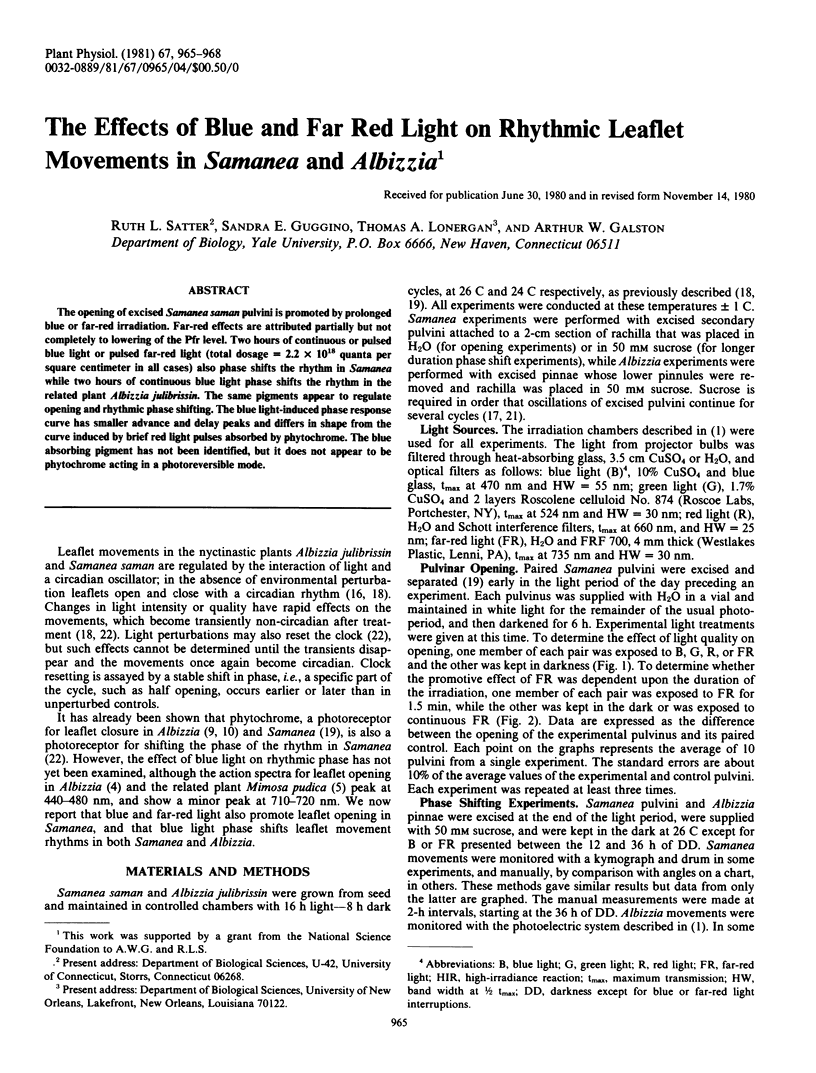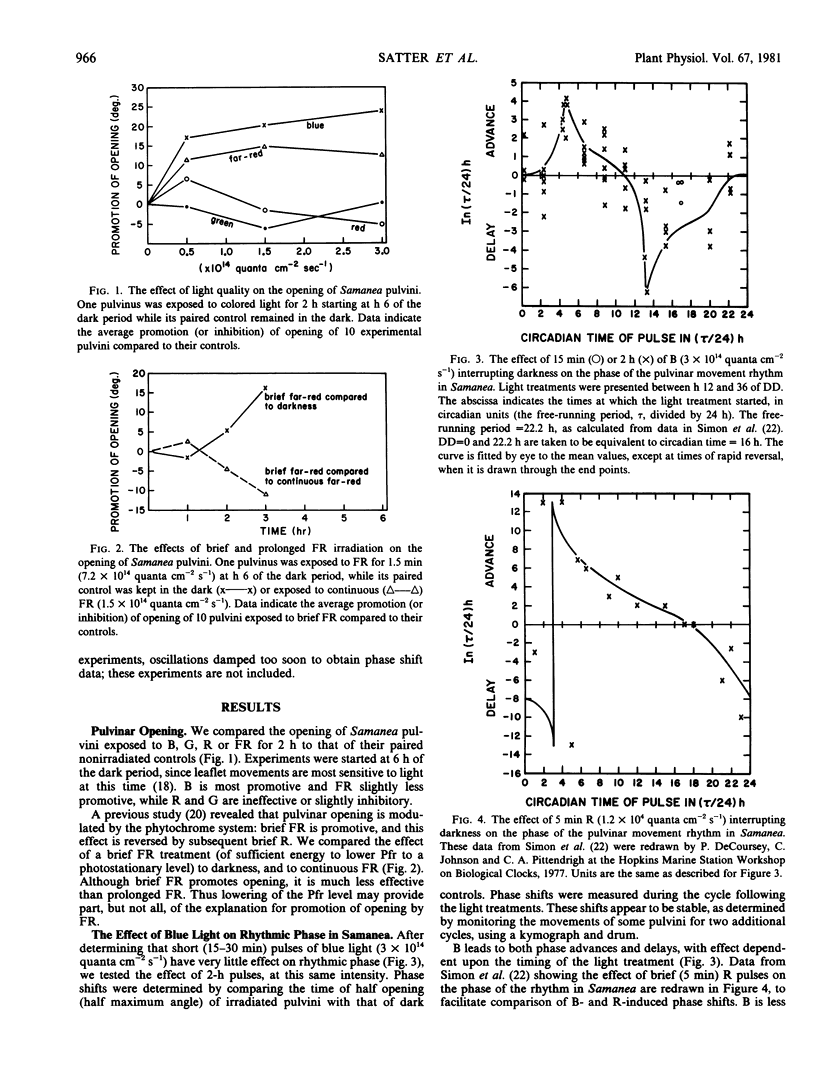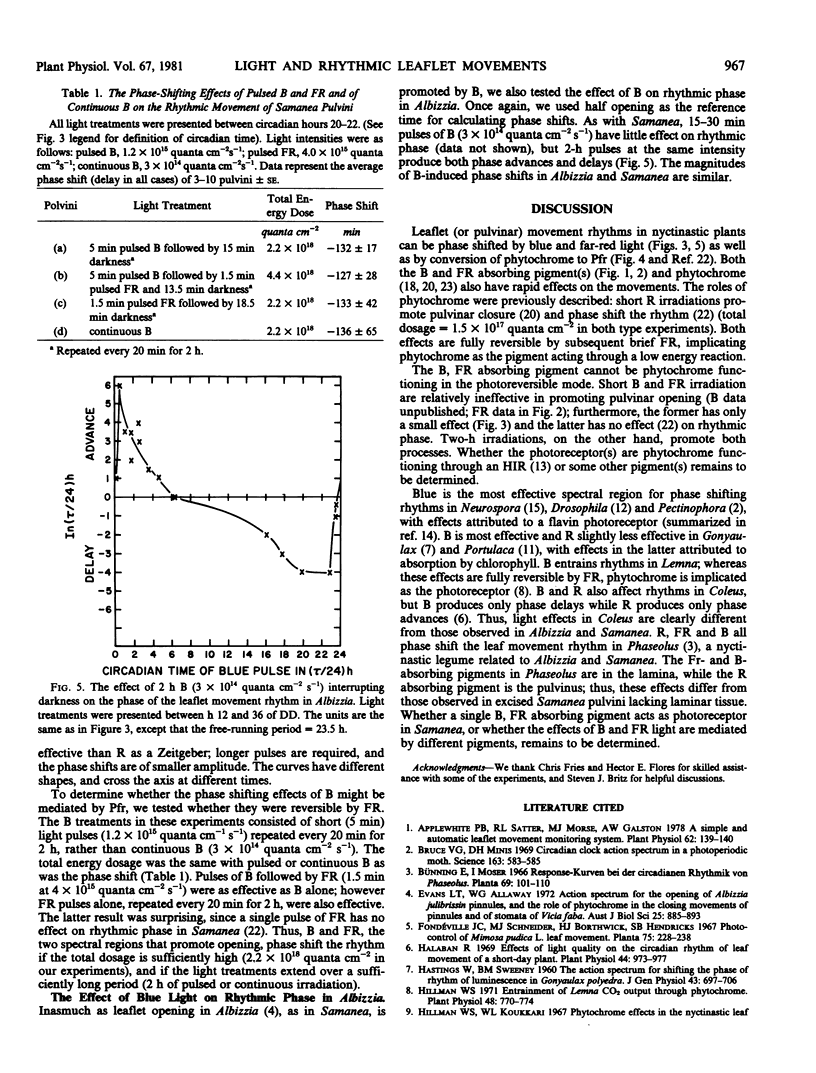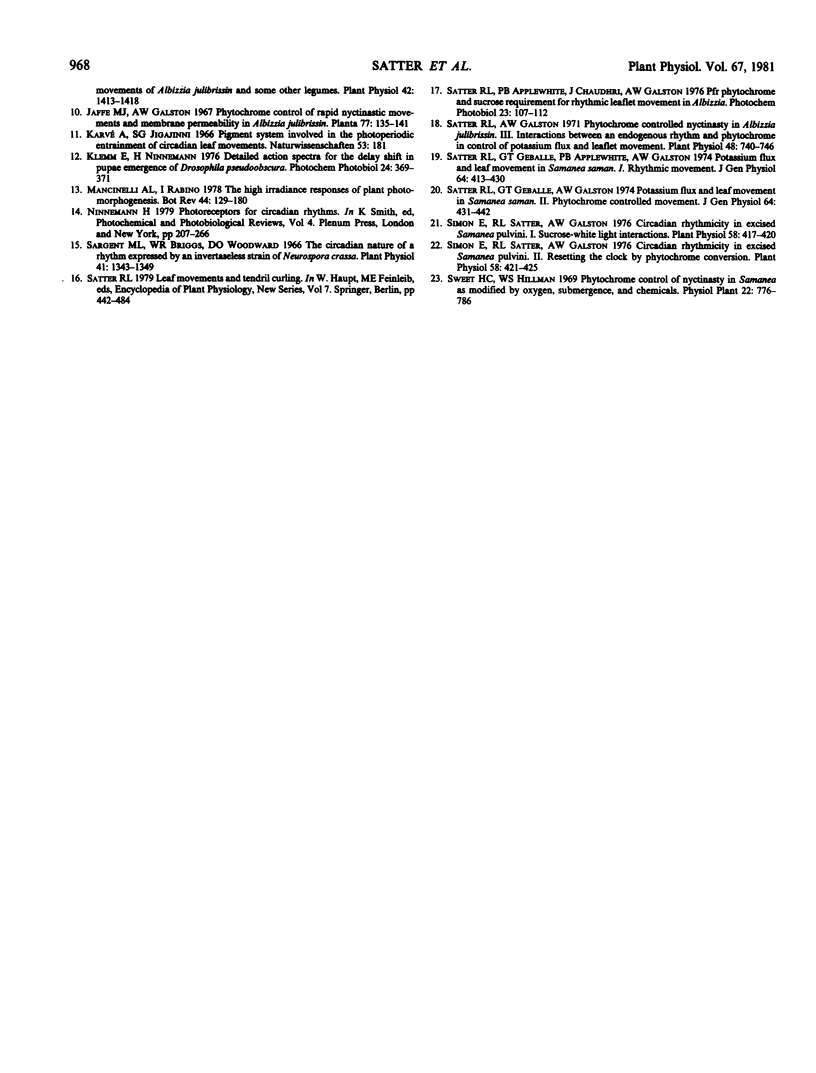Abstract
The opening of excised Samanea saman pulvini is promoted by prolonged blue or far-red irradiation. Far-red effects are attributed partially but not completely to lowering of the Pfr level. Two hours of continuous or pulsed blue light or pulsed far-red light (total dosage = 2.2 × 1018 quanta per square centimeter in all cases) also phase shifts the rhythm in Samanea while two hours of continuous blue light phase shifts the rhythm in the related plant Albizzia julibrissin. The same pigments appear to regulate opening and rhythmic phase shifting. The blue light-induced phase response curve has smaller advance and delay peaks and differs in shape from the curve induced by brief red light pulses absorbed by phytochrome. The blue absorbing pigment has not been identified, but it does not appear to be phytochrome acting in a photoreversible mode.
Full text
PDF



Selected References
These references are in PubMed. This may not be the complete list of references from this article.
- Applewhite P. B., Satter R. L., Morse M. J., Galston A. W. A Simple and Automatic Leaflet Movement-monitoring System. Plant Physiol. 1978 Jul;62(1):139–140. doi: 10.1104/pp.62.1.139. [DOI] [PMC free article] [PubMed] [Google Scholar]
- Bruce V. G., Minis D. H. Circadian clock action spectrum in a photoperiodic moth. Science. 1969 Feb 7;163(3867):583–585. doi: 10.1126/science.163.3867.583. [DOI] [PubMed] [Google Scholar]
- Halaban R. Effects of light quality on the circadian rhythm of leaf movement of a short-day-plant. Plant Physiol. 1969 Jul;44(7):973–977. doi: 10.1104/pp.44.7.973. [DOI] [PMC free article] [PubMed] [Google Scholar]
- Sargent M. L., Briggs W. R., Woodward D. O. Circadian nature of a rhythm expressed by an invertaseless strain of Neurospora crassa. Plant Physiol. 1966 Oct;41(8):1343–1349. doi: 10.1104/pp.41.8.1343. [DOI] [PMC free article] [PubMed] [Google Scholar]
- Satter R. L., Applewhite P. B., Chaudhri J., Galston A. W. Pfr phytochrome and sucrose requirement for rhythmic leaflet movement in Albizzia. Photochem Photobiol. 1976 Feb;23(2):107–112. doi: 10.1111/j.1751-1097.1976.tb06781.x. [DOI] [PubMed] [Google Scholar]
- Satter R. L., Galston A. W. Phytochrome-controlled Nyctinasty in Albizzia julibrissin: III. Interactions between an Endogenous Rhythm and Phytochrome in Control of Potassium Flux and Leaflet Movement. Plant Physiol. 1971 Dec;48(6):740–746. doi: 10.1104/pp.48.6.740. [DOI] [PMC free article] [PubMed] [Google Scholar]
- Satter R. L., Geballe G. T., Applewhite P. B., Galston A. W. Potassium flux and leaf movement in Samanea saman. I. Rhythmic movement. J Gen Physiol. 1974 Oct;64(4):413–430. doi: 10.1085/jgp.64.4.413. [DOI] [PMC free article] [PubMed] [Google Scholar]
- Satter R. L., Geballe G. T., Galston A. W. Potassium flux and leaf movement in Samanea saman. II. Phytochrome controlled movement. J Gen Physiol. 1974 Oct;64(4):431–442. doi: 10.1085/jgp.64.4.431. [DOI] [PMC free article] [PubMed] [Google Scholar]
- Simon E., Satter R. L., Galston A. W. Circadian Rhythmicity in Excised Samanea Pulvini: II. Resetting the Clock by Phytochrome Conversion. Plant Physiol. 1976 Sep;58(3):421–425. doi: 10.1104/pp.58.3.421. [DOI] [PMC free article] [PubMed] [Google Scholar]
- Simon E., Satter R. L., Galston A. W. Circadian rhythmicity in excised samanea pulvini: I. Sucrose-white light interactions. Plant Physiol. 1976 Sep;58(3):417–420. doi: 10.1104/pp.58.3.417. [DOI] [PMC free article] [PubMed] [Google Scholar]


